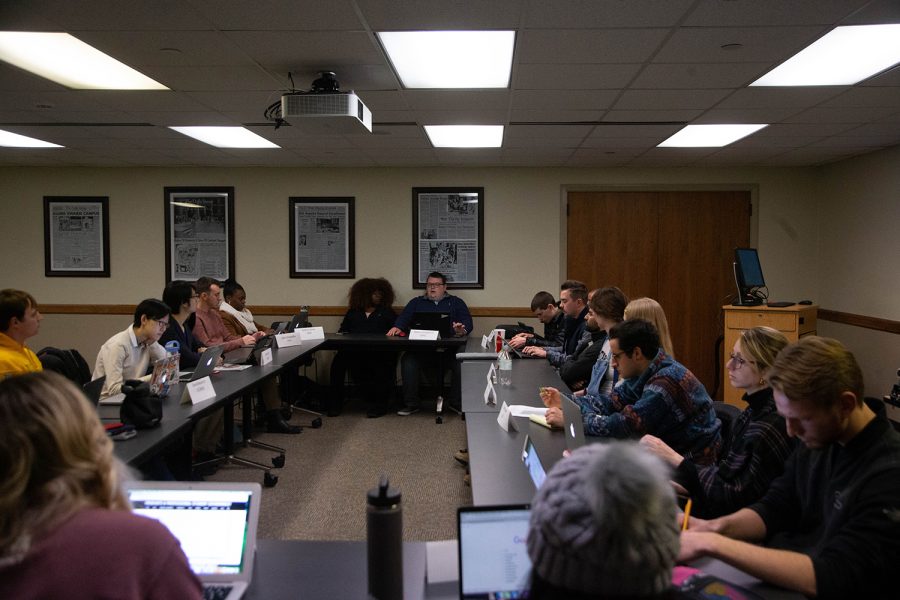GPSG restructures committee process to encourage student participation
The University of Iowa Graduate and Professional Student Government restructured its internal committee process to make participation easier for students.
Graduate and Professional Student Government President Dexter Golinghorst brings up announcement during a meeting in the IMU on Tuesday, Nov. 12, 2019.
November 12, 2019
University of Iowa Graduate and Professional Student Government has introduced a new structure to its committee process to allow more students to participate in the areas they are interested in.
The restructure aims to encourage any graduate or professional student to take part in committees that peak their interest.
At their meeting on Tuesday, GPSG allowed each committee the opportunity to share what projects they are currently working on.
Committees include Governmental Relations; Health and Safety; Interprofessional; Sustainability; and Diversity, Equity, and Inclusion.
RELATED: UISG, GPSG, unanimously pass resolution to fight climate change
The previous structure was more formalized and closed to everyone except the committee chairs and assigned delegates, GPSG President Dexter Golinghorst said. The new model has already caused the number of students involved to double, he added.
This new structure will allow students to self-identify with a group and participate without any barriers, Golinghorst said.
“[Committees] weren’t as participatory as I wanted,” he said. “There wasn’t as much exchange of ideas. There weren’t as many new ideas being tossed around.”
With the restructure, more people can do the work required of each committee, allowing for more to get done, Golinghorst said. The structure also gives committee chairs the opportunity to delegate tasks and create subcommittees, he added.
By opening the invitation to be on GPSG committees to all students in the graduate and professional colleges, the Health and Safety Committee has gone from four members to 15, said committee chair Casey Inman.
“We got some really great interest from all kinds of different graduate programs and different professional programs,” Inman said. “So that kind of expanded our representation within the Health and Safety Committee, so we get to see more of the concerns from different areas of campus.”
The restructure and inclusion of more students will lead to the recognition of more raised concerns from more areas around campus, Inman said. It will give GPSG a broader look at what the status of safety is, she added.
The Diversity, Equity, and Inclusion Committee has grown to include 22 students within the colleges, committee chair Moala Bannavti said. The group works with similar committees outside of GPSG to advance diversity efforts across campus and will be involved with the next campus climate survey, she said.
“It was important to me to have people from the east and west side [of campus], so definitely graduate students, but also professional students,” Bannavti said.
Bannavti said she also likes to focus on the departments within each college, as well. The College of Liberal Arts has a lot of students involved, but since there are many departments, there’s still a wide array of viewpoints available to come forward, she said.
Having students among different colleges involved with GPSG discussions allows ideas, viewpoints, and conversations to happen that may not have otherwise, Bannavti said.
“I think that the committee process that we have now really sets us up for success in that way to make sure that we’re focusing on issues that are important to our population and that those students feel like they have a seat at the table if they wanted it,” Golinghorst said.






